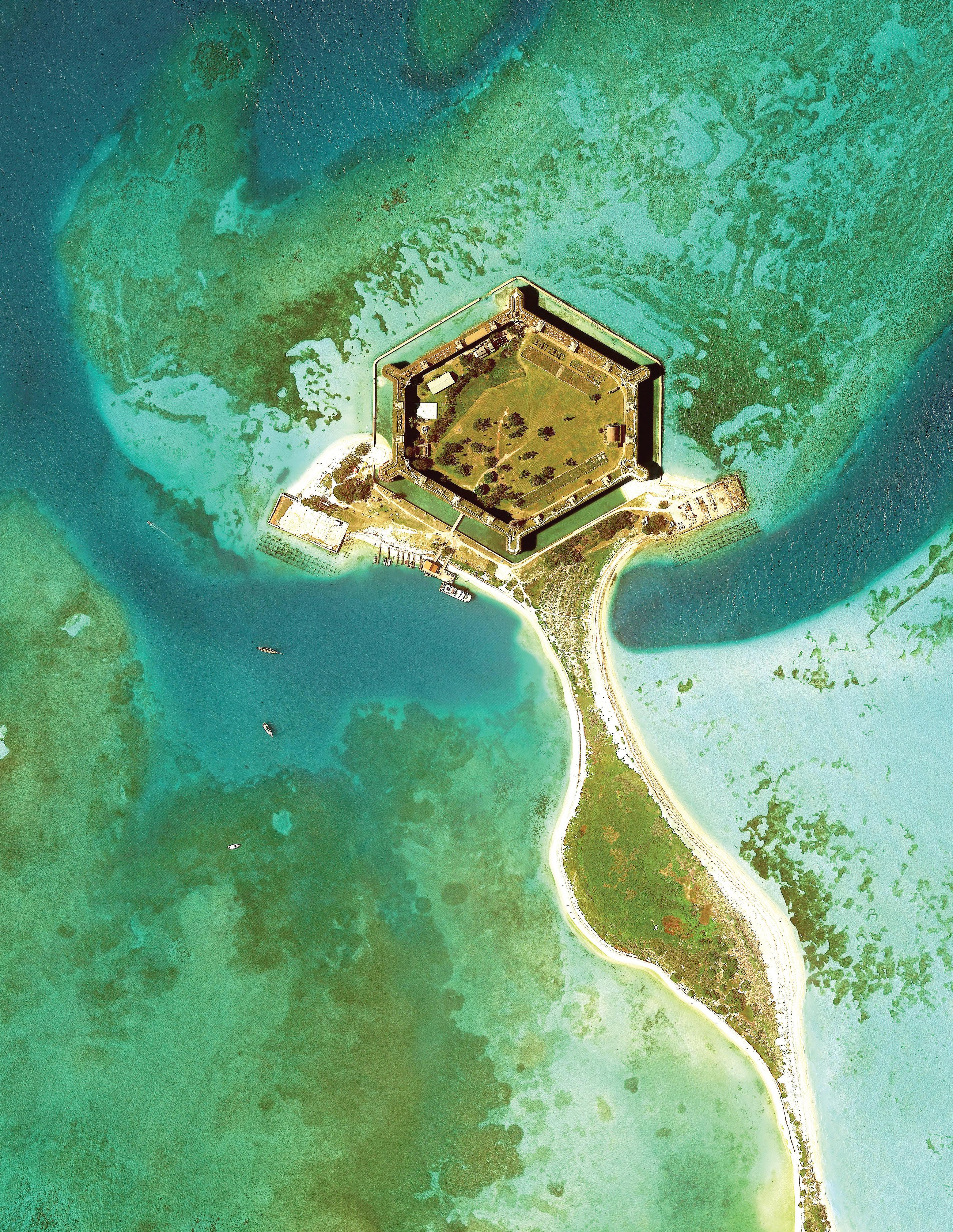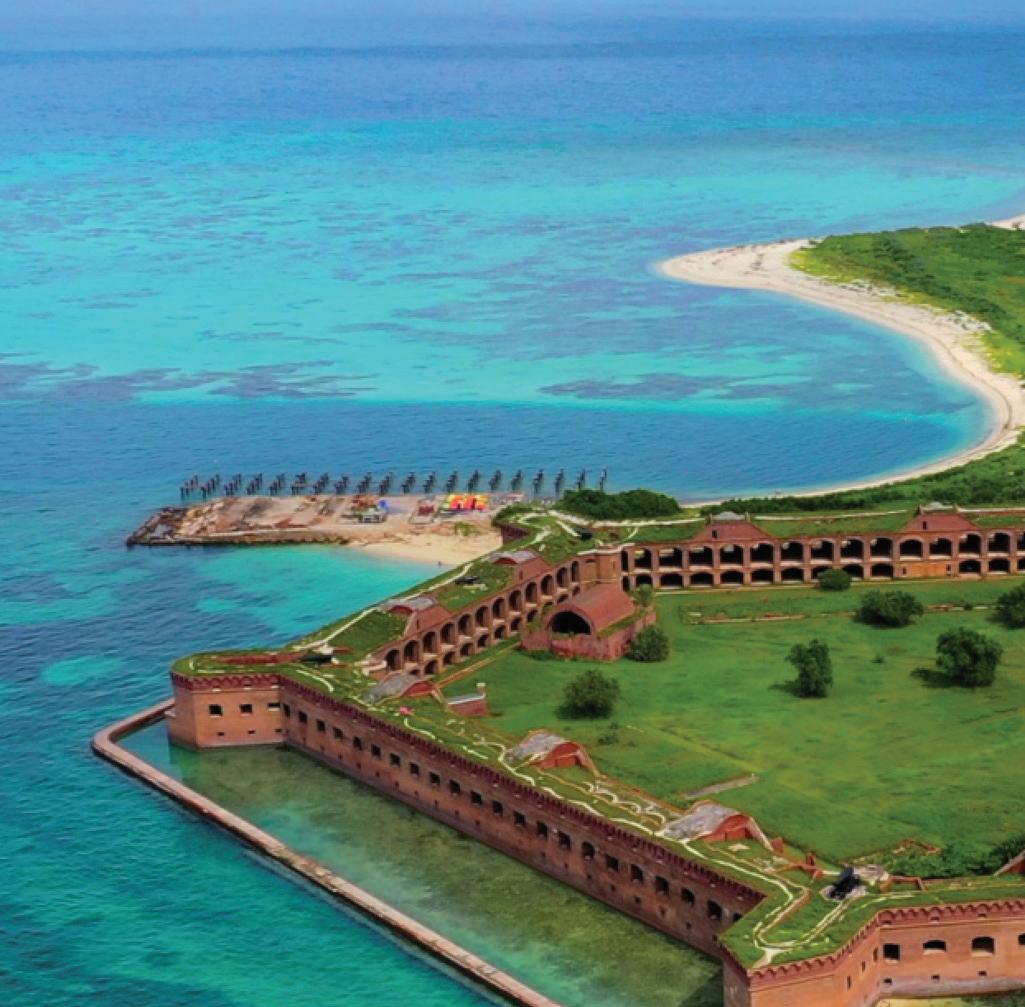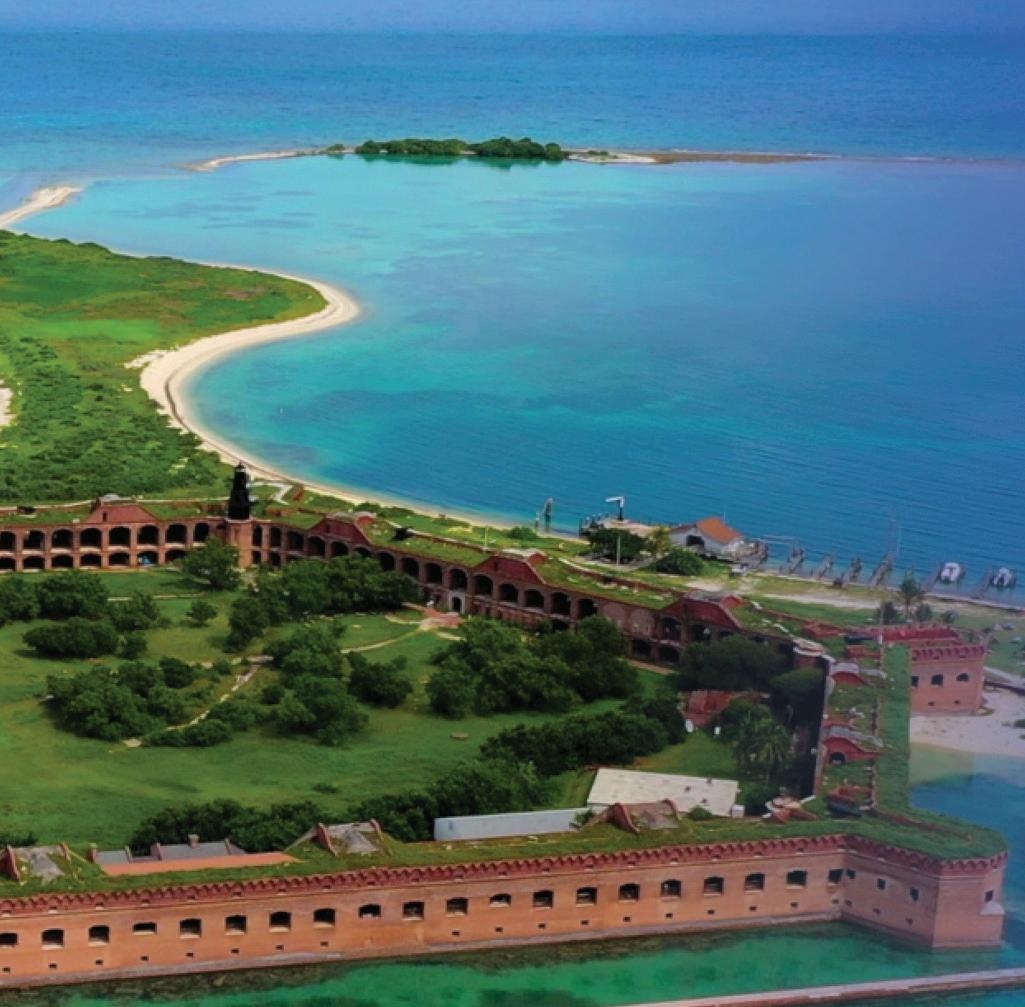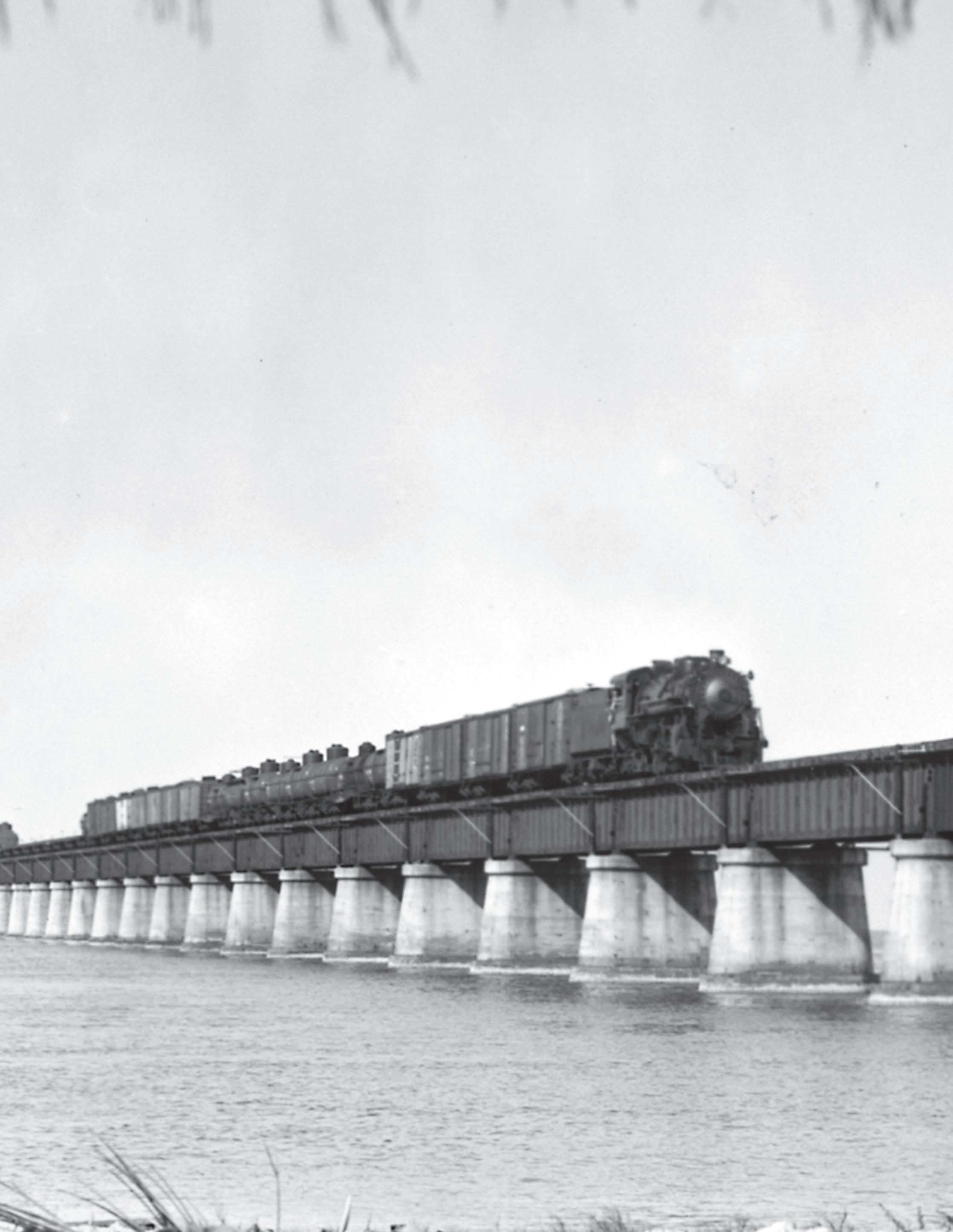
7 minute read
Engineering Triumphs of The Florida Keys
BY LINDSEY RANAYHOSSAINI, STAFF WRITER
With their unique geology and remote location off the southern coast of Florida, the Florida Keys present distinct challenges for engineers and builders with even the most advanced equipment and technology.
Though modern engineering in the Keys may still seem like a monumental feat, some of the region’s oldest engineering projects remain the most impressive engineering marvels. Designed and built more than a century ago, two legendary structures – Fort Jefferson and the Over-Sea Railroad – demonstrate that modern technology is not always necessary for resilient engineering.

Fort Jefferson
Located on Garden Key within the Dry Tortugas, Fort Jefferson was designed and built by Chief Engineer Joseph Totten and the Army Corps of Engineers to protect the shipping lines between New Orleans and the East Coast markets, as well as to ensure the United States’ claim of the Dry Tortugas. Additionally, a deep basin between Garden Key and Loggerhead Key made the area ideal for military ships to anchor and resupply.
“The idea was to build a fortification to protect the shipping lines, but also to supply these Navy ships so they didn’t have to travel all the way back to the mainland to get supplies,” said Brad Bertelli, author and Florida Keys historian.
Congress appropriated the funds for the construction of Fort Jefferson in 1844, and in 1845, President James Polk declared Garden Key a military reservation. Construction began in December 1846.
The fort was built as an elongated hexagon, with four sides measuring 77 feet and two sides measuring 325 feet, and surrounded by a 70-foot-wide moat. The fort’s 45-foot-tall walls encompass 11 of the 16 acres of land on Garden Key. It was built by slaves who were rented out by their owners for $20 a month.
Approximately 16 million bricks were used in the fort’s construction, making Fort Jefferson the largest brick structure in North America. The structure includes more than 2,000 brick arches and was designed to hold a garrison of 1,500 men.

“The bricks are interesting, because there are two kinds of bricks,” Bertelli said. “First, there were Northern bricks, which were smaller and didn’t work very well. They couldn’t withstand the harsh climate of the Dry Tortugas, so the bottom two tiers of the fort were built with Southern bricks, which were larger and held up better.”
When the Civil War broke out, however, the U.S. Government no longer had access to the Southern bricks for construction. The top tier of the fort was built with Northern bricks, leaving two distinct sections visible.
Because freshwater access was critical in the Dry Tortugas, Fort Jefferson was built with more than 100 cisterns beneath it capable of holding 1.5 million gallons of water. Additional cisterns were constructed on the parade grounds inside that could hold 92,000 gallons of water.
Though Fort Jefferson is still standing today, the structure itself was never really completed.
“Largely, it was used for Union prisoners and deserters, and for Confederates and their sympathizers,” Bertelli said. “It took too long to finish by the time the Civil War was over.
It was a great idea in the 1840s when it was started, but by the 1860s at the end of the Civil War, there were wartime advances and [the fort] just didn’t work anymore.”
As of 1874, Fort Jefferson was no longer used as a prison, and troops were recalled shortly thereafter. In 1888, the fort was turned over to the Marine Hospital Service and used as an isolation ward for patients with yellow fever. President Franklin D. Roosevelt designated Fort Jefferson a national monument in 1935, and it remains a tourist destination as part of Dry Tortugas National Park to this day.
THE OVER-SEA RAILROAD
Developed as an extension of the Florida East Coast Railway, the Over-Sea Railroad connected the Florida East Coast Railway to Key West. Henry Flagler, a principal in Rockefeller, Andrews & Flagler and founder of Standard Oil, drove the development of both projects.
Nicknamed “Flagler’s Folly,” the Over-Sea Railroad was designed in response to the U.S. Government’s 1905 announcement of its intent to construct the Panama Canal. Flagler envisioned the railroad as a means of connecting the nation’s closest deep-water port to the new canal.
Engineer William J. Krome led the project and mapped out the ideal route. The resulting structure would span 156 miles and cost an estimated $50 million to build.
“It was a very difficult project, but it really transformed the Florida Keys,” Bertelli said. “Prior to Flagler doing this, the island chain had been unconnected, both from island to island and island to mainland.”

This changed the Florida Keys from a culture reliant on boats to bring people, mail and supplies to the islands and shifted communities from the edges of the island to the right-of-way, Bertelli said. Ultimately, the railroad made life in the Keys easier for residents and provided a more reliable connection to mainland Florida.
However, the process of constructing the Over-Sea Railroad was grueling and arduous. Throughout the construction process, which stretched from 1905 to 1916, the Keys were hit by three hurricanes in 1906, 1909 and 1910. The project required as many as 50,000 laborers in total and 4,000 men at any given time, with approximately 90 worksites operating up and down the island chain.
Laborers were sourced from recruiting offices in Boston, Philadelphia and New York, and the extreme working conditions made for a high attrition rate. Despite blistering heat, the men who built the railroad wore long pants, long-sleeved shirts and jackets to keep the persistent mosquitoes at bay. Dynamite was heavily used in the construction process, leading to countless injuries and even some deaths.
“It was tough to get people to come down and do the work, as you can imagine,” Bertelli said.
Building a railway through the ocean required numerous engineering innovations, as well as materials uniquely suited for the structure. German concrete was used for the foundation of the bridge, as it was more durable and cured faster than other materials.
Shallow draft barges were loaded with marl, coral rock and railroad ties for construction, and temporary railroads were built so that small engines and flat railcars – also delivered by barge – could transport materials to the many construction sites.
“It was all boats and barges, and it was difficult because the water here is very shallow,” Bertelli said.
To lay the foundation for the bridge, workers dredged the bottom of the ocean and piled the concrete on top. Two barges worked from one side of each section and met in the middle, dumping marl and coral rock in bigger and bigger piles using slurry pipes.
“A lot of it was kind of making it up as they went along, and the innovation that they had to do was really quite remarkable,” Bertelli said.
One limiting factor in the construction process was the availability of freshwater, as pile drivers and other construction equipment used during the period were steam-powered. Most of the freshwater, Bertelli said, was sourced from Manatee Creek, located along the “18-Mile Stretch.” The project required an estimated 5 million gallons of freshwater every month.
“They built a large freshwater station there, and these large cypress water tanks were placed on flatbed railcars to bring all this freshwater to the work sites,” Bertelli said.
The most difficult bridge to construct was the Bahia Honda Bridge, as the waters in this area are 30 feet deep. Because the rush of water was so dangerous, laborers could only work during slack tide; this limited the workday to just one hour. When the October 1910 hurricane sat over the Keys for nearly 30 hours, part of the foundation the workers had laid was destroyed. An entire shipload of materials was required to rebuild the segment.
Flagler took his first trip across the Over-Sea Railroad in 1912, but Bertelli said construction was not complete until 1916.
Though much of the Over-Sea Railroad was destroyed during the tragic Labor Day Hurricane of 1935, remnants of the structure were sold to the State of Florida and used in the construction of the Overseas Highway. Those components are still intact today.
“What’s crazy is that those railroad bridges are still standing,” Bertelli said. “And the ones that were built in the 70s and 80s are all falling apart.”







